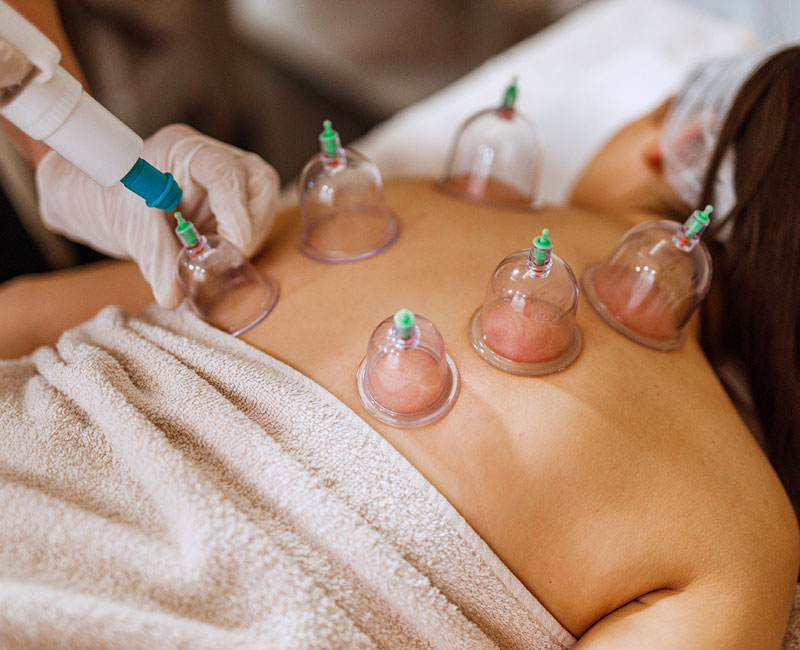
What is Cupping Massage?
Cupping massage, also referred to as cupping therapy, is a traditional technique that involves placing suction cups on the skin to create a vacuum.
History
Cupping has been practiced for thousands of years in ancient Chinese and Egyptian medicine and remains popular in Middle Eastern cultures.
Request an AppointmentHow It Works
Cups are applied to the skin and can be heated to expel oxygen or connected to a suction device to generate negative pressure. This suction pulls the skin into the cup, decompressing muscles and connective tissue. Research suggests that cupping may help eliminate toxins by stimulating the immune response both locally and systemically. It may also aid in the removal of uric acid, a waste product from the digestion of certain foods, which can lead to increased acidity in the blood and urine. Additionally, cupping may positively impact the lymphatic system, which plays a key role in waste elimination.
Types of Cupping
There are two main types of cupping:
- Dry Cupping: The skin is not pierced.
- Wet Cupping: The skin is pierced to allow blood to flow into the cup.
Side Effects
Most side effects are mild and may include bruising and irritation. In rare cases, individuals may experience lightheadedness or nausea.
Benefits of Cupping Massage
Cupping is believed to enhance blood flow, reduce pain, and promote healing. It is commonly used to treat musculoskeletal injuries, back pain, headaches, and migraines.
A report published in the Journal of Traditional and Complementary Medicine in 2015 suggested that cupping could also be beneficial for conditions like acne, herpes zoster, and pain management, although the researchers noted the need for more rigorous studies.
Cupping therapy can be applied to treat a variety of conditions, including:
- Blood disorders such as anemia and hemophilia
- Rheumatic diseases like arthritis and fibromyalgia
- Fertility and gynecological issues
- Skin conditions such as eczema and acne
- Back pain and other body aches
- High blood pressure
- Migraines
- Anxiety and depression
- Bronchial congestion due to allergies and asthma
- Varicose veins
